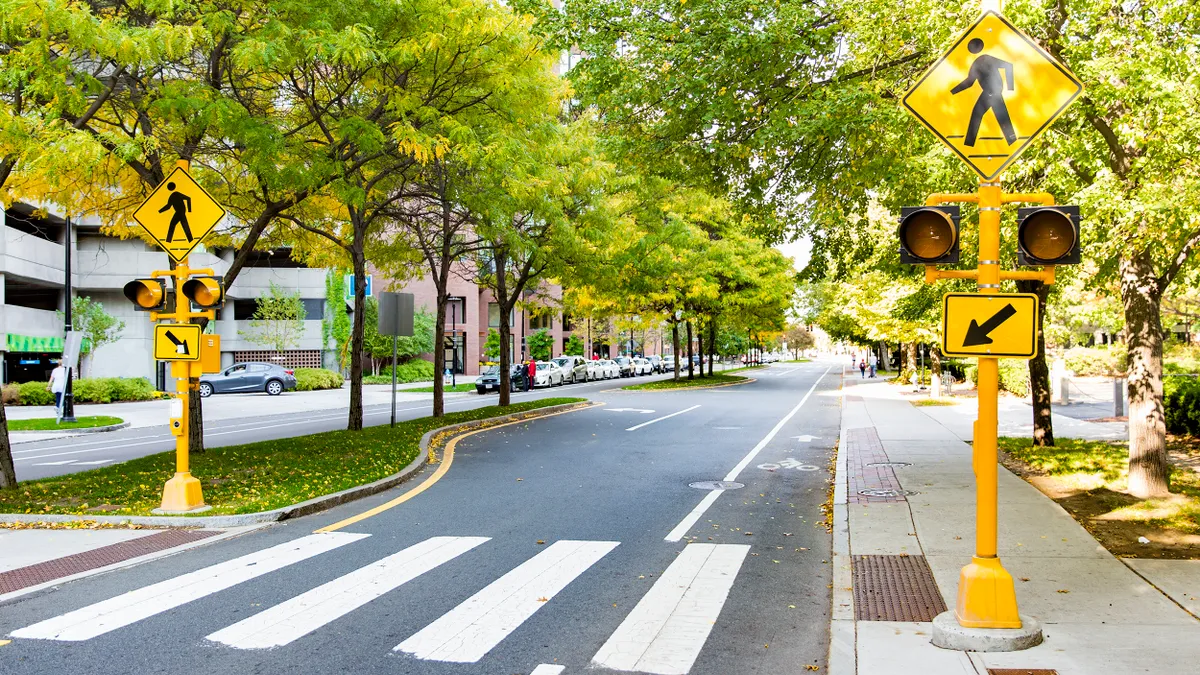Dive Brief:
-
The Federal Highway Administration has incorporated federal policy changes stemming from the 2021 infrastructure law into its bicycle, pedestrian and shared micromobility guidance, according to an agency press release Friday.
-
The 2021 infrastructure law expanded funding opportunities and encouraged Complete Street policies, the release says, and mandated that states spend at least 15% of highway safety money on preventing deaths among vulnerable road users, such as cyclists and pedestrians, under certain conditions.
-
“The law also provides more flexibility to help cities and states address active transportation needs,” FHWA Administrator Shailen Bhatt said in a statement. “We are open to new ideas and committed to working with our partners to make this transportation vision a reality so that biking, walking and other ways to travel are safe, convenient and enjoyable for everyone.”
Dive Insight:
Federal, state and local lawmakers increasingly view biking, walking and micromobility as ways to potentially reduce climate pollution, ease traffic congestion and improve transportation equity. Several measures in the 2021 infrastructure law aim to help state and local governments develop and implement policies, programs and projects that advance those transportation modes.
Policymakers are also growing more concerned about roadway deaths and injuries, especially fatalities among pedestrians and cyclists, which increased by 13% and 1.9% from 2020 to 2021, according to the National Highway Traffic Safety Administration.
The U.S. Department of Transportation and FHWA have recently taken steps to improve bicycle and pedestrian safety, including new guidance on roadway lighting and incorporating Complete Streets into resurfacing, restoration and rehabilitation work.
The Transportation Department also awarded $800 million in February to improve road redesign and intersections and address roadway safety under the Safe Streets and Roads for All grant program. The Federal Transit Administration also said in March it would waive the local funding match requirement for Complete Streets planning activities covered by the Metropolitan Planning Program and the State Planning and Research Program.
While the 2021 infrastructure law contains provisions that aim to improve roadway safety among cyclists and pedestrians, some federal Democratic lawmakers don’t think it went far enough, leading them to introduce a federal bill in March to encourage states to eliminate gaps in their protected bike-lane and pedestrian networks.
Correction: A previous version of this story misstated the source of funding that states must use to prevent deaths among vulnerable road users. The spending must come from highway safety money.












